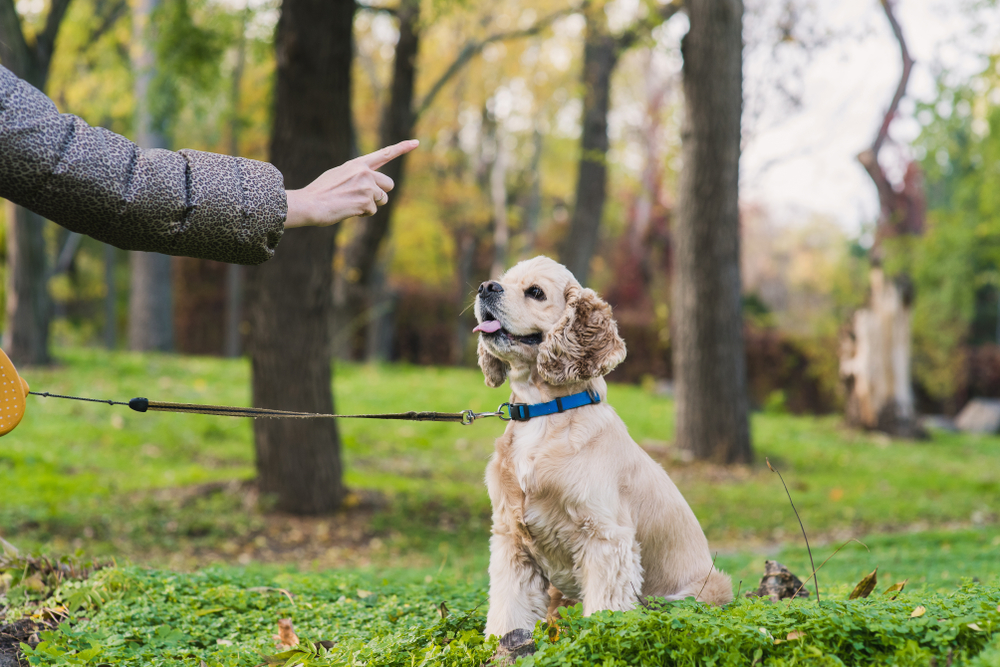Affordable dog obedience services Raleigh NC solutions to help your pet succeed.
Wiki Article
Master Crucial Commands: Efficient Pet Dog Training Made Easy
Effective pet training is an essential facet of liable pet dog possession, and mastering necessary commands works as the structure for a harmonious connection in between handler and canine. Commands such as "Sit," "Remain," and "Come" not only help with communication however additionally advertise a more secure environment. Using favorable reinforcement strategies can enhance the understanding experience, yet lots of deal with challenges in achieving regular outcomes. Comprehending the subtleties of canine actions and the training procedure is essential; however, the trip to a well-trained canine commonly offers unanticipated difficulties that call for attention. What strategies can genuinely transform these challenges into chances for growth?Comprehending Your Pet dog's Behavior
To realize the subtleties of reliable dog training, it is important to damage down and examine your canine's actions. Dog training. Comprehending the motivations behind your dog's actions is critical; behaviors can originate from instinct, fear, enjoyment, or a desire for focus. By observing your pet dog in numerous scenarios, you can determine patterns that might suggest underlying feelings or needsFor example, a pet that barks excessively might be revealing dullness, anxiousness, or a need for social interaction. On the other hand, a pet dog that exhibits damaging actions may be looking for excitement or remedy for stress. Recognizing these triggers enables you to customize your training technique properly.
In addition, it is vital to think about the pet dog's type qualities, as they can affect actions substantially. Some breeds are inclined to specific attributes, such as herding or safeguarding instincts, which can impact their responses to certain stimuli.
Lastly, uniformity in your feedbacks to your canine's behavior fosters a far better understanding between you and your family pet. This mutual comprehension is foundational for developing count on and promoting a reliable training procedure that nurtures both behavioral modification and favorable support.
Necessary Commands to Instruct
Educating vital commands is an essential aspect of efficient dog training, supplying the structure for a mannerly and responsive pet dog. These commands not only enhance interaction in between the proprietor and the pet however also guarantee security in numerous environments.The most vital commands consist of "Sit," which motivates your dog to continue to be fixed and tranquil; "Remain," which strengthens the concept of remaining in one place up until released; and "Come," which is essential for remembering your pet from possibly harmful circumstances. "Down" instructs pet dogs to rest, advertising relaxation and control, while "Leave it" helps avoid pets from getting hazardous or unwanted things.
" Heel" is an additional crucial command that urges your pet to stroll very closely beside you, boosting chain manners. "No" offers as an important boundary-setting command, aiding to correct unwanted habits.
Training Methods for Success
Effective dog training depends heavily on employing a variety of methods that cater to both the pet dog's learning design and the owner's training goals. One key method is positive support, which includes gratifying preferred actions with treats, praise, or play. This technique motivates the canine to repeat those actions, fostering a strong bond in between owner and family pet.
One more efficient method is remote control training, where an unique sound, made by a clicker, notes the exact moment a pet dog does a desired activity. This precise timing helps pet dogs connect the habits with the reward, boosting their understanding.
Uniformity is critical in all training methods. Developing clear commands and maintaining the exact same signs helps the pet dog understanding assumptions more swiftly. Furthermore, short, engaging training sessions stop dullness and boost retention.
Including socializing chances is likewise important. Revealing dogs to various atmospheres, individuals, and other animals helps them create self-confidence and versatility.
Lastly, persistence plays a considerable role in successful training - Dog training. Each dog discovers at their own rate, and comprehending this can lead to a much more delightful training experience for both the proprietor and the canine. Carrying out these techniques will set the foundation for effective canine training
Usual Challenges and Solutions
Regardless of the most effective training methods, pet dog proprietors typically come across typical obstacles that can hinder progression. One common concern is inconsistency in commands and hints. When family members utilize various commands for the very same behavior, it puzzles the pet, leading to inconsistent responses. The service hinges on developing a unified approach amongst all family participants, ensuring that every person uses the very same terminology and signals.

Furthermore, some dogs might display stubbornness or lack motivation. This can usually be addressed by including positive reinforcement methods, such as deals with or appreciation, to motivate wanted actions. Tailoring incentives to what your pet dog finds most motivating can significantly improve their involvement.
Lastly, fear or anxiousness can hinder progression in training. Acknowledging signs of tension and readjusting the training pace appropriately is vital. Employing progressive exposure to been afraid stimulations can help develop confidence gradually, facilitating a more reliable training experience.
Preserving Uniformity and Perseverance
Uniformity and perseverance are vital in pet training, as they create the structure for accomplishing lasting behavior puppy Training modifications. Pet dogs flourish on regular and clear expectations; therefore, maintaining a constant method in commands, benefits, and improvements is important.Equally important is the function of patience. Educating a pet dog is not an immediate procedure; it needs time and repeating. Canines, much like human beings, have varying learning rates and might not comprehend commands immediately. Trainers must identify this and continue to be tranquil, providing motivation instead of disappointment. Favorable reinforcement plays an important function here, satisfying desired actions and assisting to promote a trusting partnership in between the pet and instructor.
Verdict
Grasping necessary commands is essential to effective dog training, cultivating boosted communication and reinforcing positive habits (Dog training). Eventually, a well-trained dog not only shows great habits yet additionally establishes confidence, adding to a harmonious partnership in between the dog and its owner.Report this wiki page